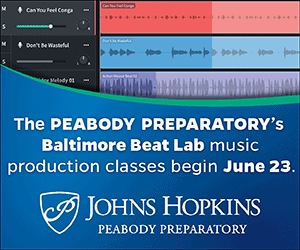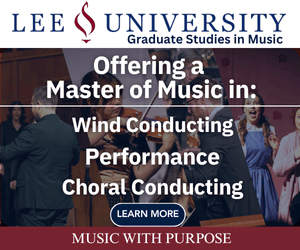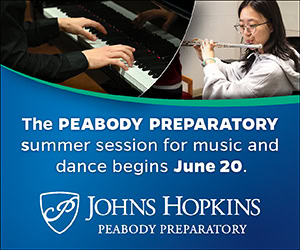/ News Posts / Spring Forward . . . Remotely, When Necessary
Spring Forward . . . Remotely, When Necessary
Recognize the Importance of Recruiting ALL Students
By NAfME Member Lori Schwartz Reichl
A similar version of this article was originally published in the April 2019 teacher edition of In Tune Magazine.
The article has been enhanced to reflect the needs of the pandemic.
“The best way to predict the future is to create it.” ~ Abraham Lincoln
This past year has been challenging and exhausting. However, it may have also been motivating and reflective with moments of joy surprisingly sprinkled throughout. Within our music programs, the pandemic has allowed us to observe and experience what is working, what needs to be eliminated or refreshed, and what could be added to enhance our programs and our students’ learning and musical experiences.
In our rush to recruit, retain, and possibly rebuild, we should not forget to celebrate, educate, and advocate for all students, not only some, to participate in our music programs. Recruitment activities and audition processes that may eliminate or discourage students from joining or continuing participation should be reconsidered. Students should feel excited and welcomed to join our programs. They should feel as though their abilities, backgrounds, and cultures are accepted, their life and learning skills are being developed beyond the familiar, and a sense of unity permeates the learning environment. We should provide meaningful musical experiences that represent all students, regardless of such diverse factors as ability, age, gender, language, learning style, race, religion, sexual orientation, or socioeconomic status. Opportunities for motivation, musicianship, and leadership exist everywhere. As educators it is our duty to acknowledge this, to educate ourselves and others with an awareness and understanding, and to provide a diverse representation of participants, role models, repertoire, and reality as a reflection of all students. This belief system is necessary for acceptance, development, and unity.
It takes a great deal of self-reflection to realize whether our teaching philosophies and recruitment efforts are truly including all students. Even when we, as educators, think we are being kind, supportive, and passionate, we may be excluding certain populations of students. We can open our minds and hearts to adaptations that support all students and to better understand the desire for all students to actively participate in performing ensembles. If you are unfamiliar with United Sound, connect with this organization and discover ways to make music programs more inclusive.
How will your music program or performing ensemble “spring forward” after a year of uncertainty? Will it be inclusive of everyone interested in making music? In a normal year, final adjudications, performances, and trips would typically be coming to a close around this time. What does this year’s end of the school year look and feel like? How do we want to build on it? Must we rebuild?! More than ever, we must think about how next year’s students, ensembles, challenges, and excitements will grow our programs. Who will be the members in next year’s ensembles? What will the instrumentation or voice parts be? Are we considering what efforts we will need to achieve a balanced ensemble, or should we be more focused on attracting participants at this time?
By this point in the school year, you may have already held auditions for next year’s ensembles, listened to recordings, and/or scheduled incoming students for their appropriate courses. But why stop now? And, if you have not completed these tasks or made contact yet with incoming students, then consider a spring recruitment presentation. In a normal year, these are often achieved in face-to-face settings. However, the ease at which we now meet remotely, record a video, or create online content could be used in place of a face-to-face visit.
As the high school director, consider creating a recruitment presentation for the middle school students about to enter high school. As the middle school director, consider creating a presentation for the elementary students about to enter middle school. Contact each of your feeder directors and coordinate days and times to meet with incoming students—either face-to-face or remotely. You may even consider including the future rising grade, too, as inspiration for program growth. These meetings could be scheduled during a rehearsal or as an additional meeting time, with the approval of each school’s director and administration. These meetings could be intended for students only, or they could also include the parents/families of the incoming students. Consider providing these presentations to the entire student body of each grade, rather than only the current participating ensemble members. You may attract a beginning musician, a transfer student, or a previous member to join the program.
Consider inviting an ensemble to perform, a chamber group to highlight musical independence, or a few individual students to perform solos, duets, or such. If this is not possible, record these students performing alone or with others or show a video of one of your ensemble’s most recent virtual or face-to-face performances. Ask students to verbally share what they enjoy most as members of the music program and what they look forward to in the coming year. Encourage current members to share concerns they may have had prior to their commitment and to explain how they have overcome them. Ask them to describe the advantages of being a valued member of the program. Lastly, consider including another subject area teacher, an administrator, or a parent/family member to provide testimonials, too.
Create an informative and engaging presentation and/or video that includes the following:
- Name of school/program
- Director’s name and contact information
- Performing ensembles
- Vision of the program
- Components of the program
- Typical schedule of a performing member
- Opportunities for ensemble advancement
- Opportunities for audition or participation in county, region, state, national, or international ensembles
- Rehearsal description
- Uniform expectations
- Upcoming events and performances
- Photos
- Videos
Be sure to explain the similarities and differences of the students’ current program to that of your program. For instance, when recruiting younger students, explain the frequencies of rehearsals, how students will be required to bring materials and/or instruments to/from school each day, length of rehearsals, number of performances, adjudications, trips, practice required at home, and so forth.
Create a document for students to take home to share with their families. In addition to, or instead of, consider creating a recruitment website or page of an existing website or social media platform to highlight information. Here is an example [Bear Creek Band Website] created by Elizabeth Martin, current elementary and high school band director of Elizabethtown Area School District in Pennsylvania. Include a large portion of the information addressed in the presentation in the document, website, or such. Either prior to your face-to-face or remote visit or immediately after, ask the feeder director to send a message to parents/families notifying them of this visit, introducing you, and explaining the intention of the visit. Let families know that information will be coming home with students and describe how family members can assist with a smooth transition to middle or high school, specifically with participation in the music program. Consider including a list of summer music opportunities/camps and/or a list of recommended private instructors. If the local camps are slim due to pandemic restrictions, search for remote opportunities being offered globally.
Make yourself visible in the community throughout the school year, both remotely and face-to-face. Consider opportunities for collaboration with your feeder programs throughout the school year, such as:
- offering a sectional on your primary instrument/voice part
- observing/adjudicating a rehearsal
- conducting a rehearsal
- holding a clinic for an ensemble
- creating a side-by-side concert
- hosting a community showcase of music
- hosting a marching band night
- attending a performance of your feeder programs
- assisting with a performance or trip
Do not forget the importance of getting your ensemble out of the building to be seen, heard, and appreciated within the community. Very few people outside of your classroom will support your music program or recognize its worth unless you offer a demonstration. Perform as often as possible outside of the school building, live stream a performance, or share a recording. These types of performances do not require a concert-like atmosphere; they can simply serve as inspiration. Ask the principal of your school or a feeder school, the superintendent, the mayor, or a community organizer if your ensemble can perform for an upcoming event. Perhaps your students can play and/or sing “The Star-Spangled Banner,” your school song, a prelude, a processional, or a featured selection. These can be pre-recorded, if necessary.
One of my favorite performances each year, and that of my band members’, is to travel to an elementary school with a performing ensemble dressed as children’s characters to perform pep tunes at the school for a special event. I have conducted the band dressed as a number of outlandish characters all for the sake of igniting excitement in future musicians. The younger students are in awe of the performance, the dedication of the older musicians, their instruments, and the colorful outfits. They often approach a band member or me to share with us which instrument they are learning or planning to play in the future. Although some of these face-to-face opportunities are missed, portions of them can be transferred to remote or prerecorded options. Never miss an opportunity to recruit.
Don’t sit back and wait for students to walk in the door of your classroom (or appear on the screen!) to join your ensemble or music program. Invite them! If possible, perform in your community in creative ways, collaborate with your feeder directors, connect with future students, create opportunities for engagement with all stakeholders, and positively, invite students to join your program. Entice, excite, and embrace all students and their families! Remember, the best way to predict the future of your program is to create it! Refresh. Recruit. Retain. Rebuild. When necessary, do it remotely.
About the author:

Photo: Richard Twigg Photography
NAfME member Lori Schwartz Reichl is a champion of mentorship and motivation in education. Lori has parlayed her experience of establishing and maintaining music programs in various educational settings into a portfolio career of serving as an active adjudicator, clinician, conductor, instructor, speaker, and writer. Lori is the author of more than 60 articles and interviews for an assortment of education publications. She is well known for supporting the mentorship of educators and motivation of K–12 and collegiate students. Learn more about Lori at MakingKeyChanges.com.
This summer Lori will be teaching her graduate course, “Making Key Changes: Refresh Your Music Program,” through both The University of the Arts (Philadelphia) and VanderCook College of Music (Chicago). Both options will be taught remotely via Zoom and are open to educators of ALL areas of music. Assignments have been developed with the intention for immediate implementation to your classroom/rehearsal space/program in both face-to-face and remote settings. In previous summers, the course has attracted an array of registrants—from the first-year teacher to the master 25+ year educator—from many states and abroad searching for mentorship and/or motivation.
Did this blog spur new ideas for your music program? Share them on Amplify! Interested in reprinting this article? Please review the reprint guidelines.
The National Association for Music Education (NAfME) provides a number of forums for the sharing of information and opinion, including blogs and postings on our website, articles and columns in our magazines and journals, and postings to our Amplify member portal. Unless specifically noted, the views expressed in these media do not necessarily represent the policy or views of the Association, its officers, or its employees.
April 13, 2021. © National Association for Music Education (NAfME.org)
Published Date
April 13, 2021
Category
- Diversity, Equity, Inclusion, and Access (DEIA)
- Recruitment and Retention
- Social Emotional Learning
- Special Education
- Technology
Copyright
April 13, 2021. © National Association for Music Education (NAfME.org)








